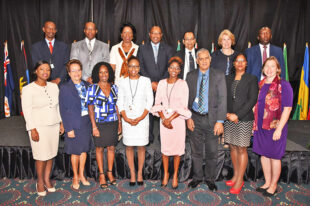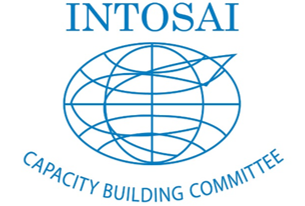WGBD Meets to Discuss Big Data Importance, Limits, Integration, Quality

The International Organization of Supreme Audit Institutions’ (INTOSAI) Working Group on Big Data (WGBD) met in April 2018 at the U.S. Government Accountability Office (GAO) headquarters in Washington, D.C., for its second meeting. More than 40 members from 20 countries attended the meeting to help advance the WGBD objectives—identify the challenges and opportunities faced by SAIs in the era of big data; summarize the knowledge and experience in the field of big data audit; and strengthen relevant bilateral and multilateral technical cooperation.
Following welcoming remarks by Gene Dodaro, United States Comptroller General, numerous presenters covered a wide range of topics related to big data, and several themes were woven throughout the presentations: the importance of data analytics for SAIs; limitations and risks when working with big data; ways to integrate big data into SAI work; and the need for quality control.
Presenters shared experiences working with big data, provided case studies as illustrations, and described various tools and techniques developed.
“Big Data Auditing Practice and Sustainable Development” by Zhihao Tang. Ms. Tang, representing SAI China, focused on big data auditing aspects, where she identified several limitations and risks, including potential issues of causation and correlation, as well as the need for both timely and accurate data. She also provided two pilot cases spearheaded by China’s SAI to use big data in promoting sustainable development.
The World Bank’s Alexandra Habershon and Marcelo Donolo briefed attendees on “Data Analytics and Integrity Risk Management in International Development,” where they outlined World Bank efforts to find paths toward integrating data analytics into current and future work, especially when it comes to anti-corruption endeavors.
“Agile Data Science” by Rachel Kirkam of SAI United Kingdom provided an overview of staged in building agile software that is outcome-focused, iterative, flexible and fits the client’s criteria.
Dr. Timothy Kropp from the U.S. Department of Health and Human Services discussed how they successfully deploy analytics for oversight by focusing on people rather than technology. In his presentation, “Using Big Data to Identify Fraud in Medicare,” he emphasized the need to build skills, encourage creativity, provide support and standards, and allow exploration among SAI staff. He also noted the importance of defining and demonstrating the value created by analytics in an age of budget constraints.
SAI Norway’s Ove Haugland Jakobsen and Knut Olav Solheim spoke to participants about “Enabling Auditors to Make Sense of Data,” highlighting SAI Norway’s initiatives to enhance data capabilities and increasing auditor awareness on using big data in audits. They stressed the importance of cleaning data that others have produced and raising awareness of statistical modeling and its value in auditing.
Neelesh Kumar Sah, SAI India, discussed the “Guideline on Data Analytics,” referencing the guide as one of the first attempts by a SAI to develop guidance specifically on data and its use in the auditing realm.
Presentations on “The Role of the SAIs in the Achievement of National Priorities and Goals” and “Relevance of the Application of the Automated System of the Remote State Audit and Its Influence on
SAIs” were given by Daria Tsyplakova and Marina Mazykina, representing SAI Russia. They noted SAIs must advance the use of data and evidence in government decision-making and emphasized great opportunities exist to use data analytics to make informed policy decisions, measure policy outcomes, and promote trust in government. Ongoing education in analytics for performance auditors was also stressed, particularly in today’s fast-paced technological environment.
Oliver Richard, U.S. GAO, gave the meeting’s final presentation on the “Optimal Combination of Quantitative and Qualitative Methods,” where he shared GAO’s experience integrating quantitative and qualitative data analysis approaches in its work to enhance accuracy and consistency in the Social Security Administration’s disability hearings decisions. “These methods are complementary and all quantitative analyses must be combined with a qualitative assessment of the evidence,” he said.
The next WGBD meeting will be hosted by SAI Denmark.





